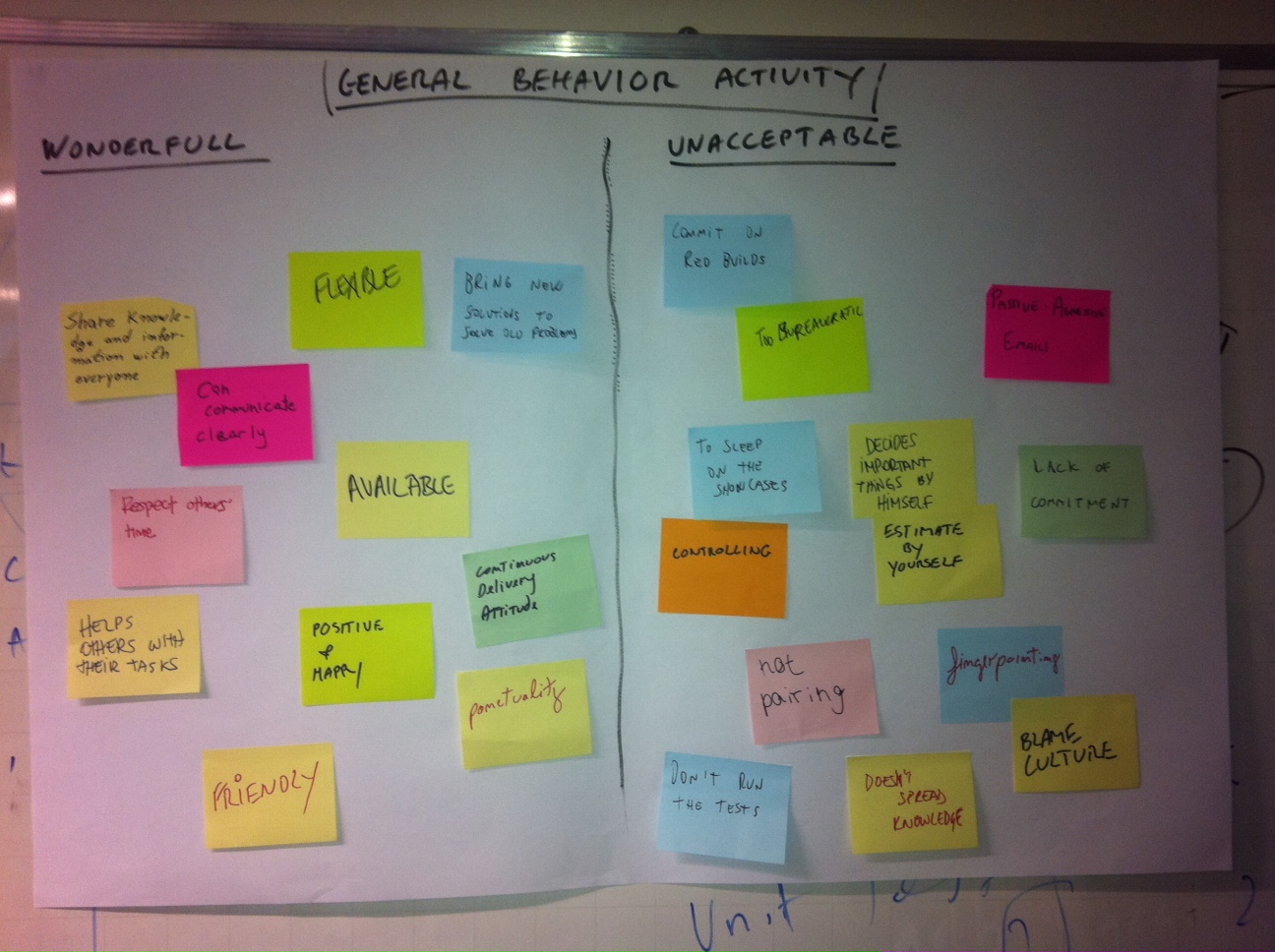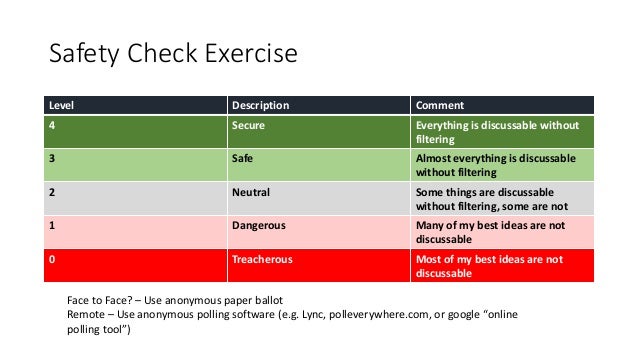For this reason, let’s use the remaining time and run an activity which might help us increase the group safety level” Creatingsafety is a good follow up activity when the safety is low or medium. Safety is an important ingredient in any agile retrospective. Our Agile Architect shares some of his techniques for measuring and maintaining safety. A team safety check retrospective.
I am not sure of the source… I found some notes tucked away in my Evernote stack. If this was your idea, thanks! Leave a comment so I can give credit where credit is due. Running the team safety survey. At the start of an agile retrospective you can do a safety check by asking people to write down how safe they feel in the retrospective.
You may have better explanations for what the numbers could mean. I would love to hear feedback on what you have used in the past that has worked for you. Start your next retro with a “Safety Check ” and learn the feelings of your team.
Retrospectives: An alternative safety check. At the start of most of the retrospectives I’ve been part of we’ve followed the safety check ritual whereby each person participating has to write a number from 1-on a sticky describing how they’ll be participating in the retrospective. Agile Frameworks bieten eine gute Orientierung, sind aber kein Universalrezept für Ihre erfolgreiche Transition.
Wir unterstützen Sie dabei, die richtige Strategie für Ihre Organisation zu entwickeln. Safety check This is a fast and effective way to measure the group participation on the retrospective activities to follow. Each team should come up with Success Criteria to attach to each improvement topic that emerges from each Agile retrospective. When the safety check returns a low result (e.g. lots of 2s and 3s) there are ways to react in a retrospective.

You can let them collect and discuss suggestions for improvement. Afterwards, run a second safety check to see if the level of safety is increasing (at least to medium). If yes, you can follow up your retrospective agenda. A New Level of Safety ? Moving beyond retrospective safety , I just happened upon a blog post by Joshua Kerievsky where he introduces the notion of cultural safety within agile or technical contexts. Activities and ideas for making agile retrospectives more engaging.
The activities to reflect upon the past. PMI – Plus, Minus, Interesting. PMI (plus, minus, interesting) is a retrospective activity that encourag. Because Agile stresses the importance of continuous improvement, having a regular Agile retrospective is one of the most important of Agile development practices. The Ninth Agile principle outlined in the Agile manifesto states, At regular intervals, the team reflects on how to become more effective, then tunes and adjusts its behavior accordingly.

Many teams have a retrospective ground rule: What Happens in the Retro Stays in the Retro. By that, they mean that in order to increase trust and create a sense of psychological safety , the team should feel comfortable knowing that nothing that is discussed in the retro leaves the room. There are many different. So let’s back up a bit.
Rather than asking what you can do to create safety during the retrospective , you should be asking what you can do to create safety in general. I recommend taking a look at this article by Slack for some ideas on how to improve psychological safety before the retro even begins. Set up a visual using a flipchart, notecards, or an electronic representation with a drawing of a thermometer from freezing to body temperature to hot. The purpose of the Prime Directive is to assure that a retrospective has the right culture to make it a positive and result oriented event.
It makes a retrospective become an effective team gathering to learn and find solutions to improve the way of working.
Keine Kommentare:
Kommentar veröffentlichen
Hinweis: Nur ein Mitglied dieses Blogs kann Kommentare posten.